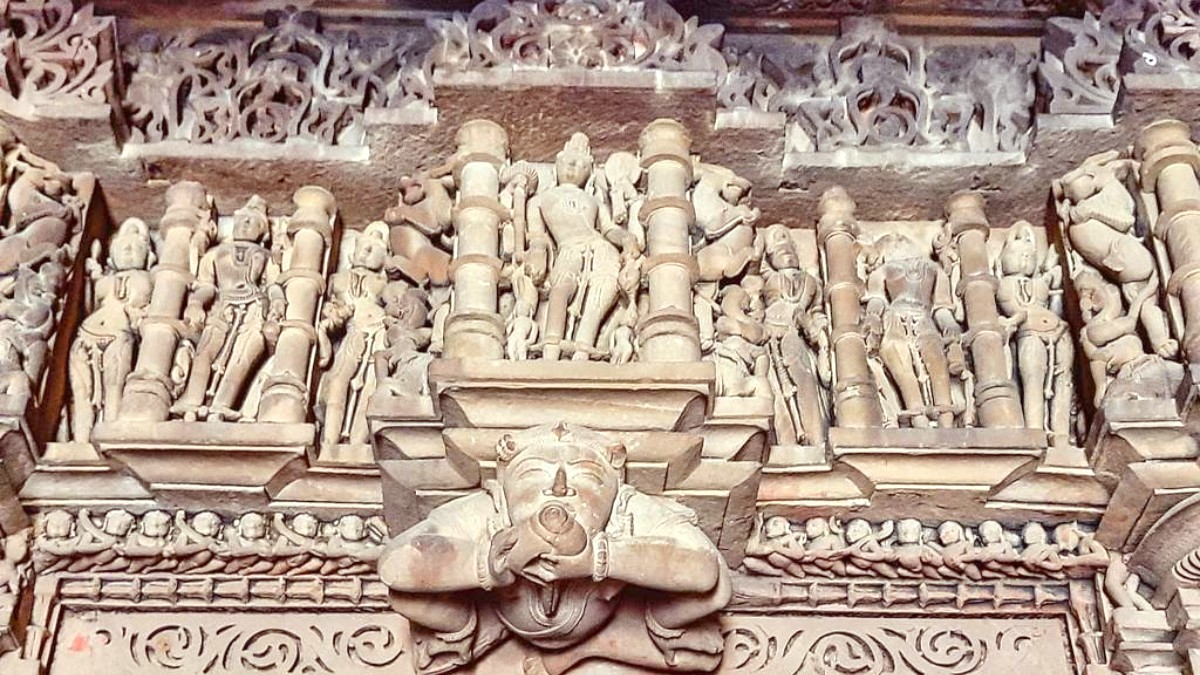
Madhya Pradesh And Chhattisgarh, India
The Khajuraho area features three distinct weather periods.
Daytime temperatures range from 8°C to 25°C (46°F to 77°F). Humidity stays low. Mornings and evenings, specifically in December and January, bring cool, sometimes chilly air. This weather makes outdoor exploration and temple visits comfortable for extended periods. Skies generally appear clear, offering good photography conditions.
Temperatures soar during these months, often going beyond 40°C (104°F). The heat is dry, but it can be intense and uncomfortable for daytime activities.
April and May are the hottest months. Sun exposure during this period calls for careful management.
October to February
Ideal weather for sightseeing. Lively atmosphere. Perfect for temple exploration and Panna safaris.
High demand for flights and lodging. Increased prices. Larger crowds at major attractions. Early booking necessary.
March, September
Fewer crowds. Possibly lower lodging and flight prices. March offers warm, sunny days.
March gets very hot towards month-end. September brings lingering monsoon humidity and showers.
April to August
Significantly lower prices for hotels and flights. Minimal tourist numbers. Peaceful temple visits. Monsoon greenery.
Extreme heat (April-May) makes outdoor activities challenging. Heavy monsoon rains (June-September) disrupt outdoor plans. Panna National Park closes during peak monsoon.
The region experiences heavy rainfall, especially in July and August. Temperatures are moderate compared to summer, but humidity is high. The landscape transforms into a lush green.
Monsoons can cause localized flooding, impact road travel, and make some outdoor areas muddy. Panna National Park usually closes for safaris during the peak monsoon.
October to February for comfortable walking and extensive complex exploration.
October to March for best wildlife spotting in Panna National Park. Animals gather near water sources.
Enjoy this evening show during the cooler evenings of the high season.
Schedule temple visits for early mornings or late afternoons. Midday for resting or hotel pool enjoyment.
Drink plenty of fluids, including bottled water, ORS, and fresh fruit juices. Avoid excessive sun exposure.
Travel to India calls for proper documentation.
Most foreign nationals need a visa for India. The e-Visa offers ease for tourists from eligible countries. The entire application happens online.
Gathering correct documents assists your visa application and entry into India.
Costs vary significantly based on your travel style and preferences.
These figures offer a general estimate. Prices change based on season, choices, and negotiation skills.
A mid-range budget provides more comfort and variety in lodging and dining.
These strategies make your trip more economical.
Prioritize your health and security while traveling.
Consult a medical professional well before your trip. Yellow Fever certificate mandatory if arriving from a risk country.
Typhoid, Hepatitis A & B, Tdap, MMR, Polio. Rabies and Japanese Encephalitis for specific situations.
Use Insect repellent containing DEET or Picaridin. Wear long-sleeved shirts and pants, especially at dawn/dusk. Sleep under a Mosquito net if needed.
Traveler's Diarrhea is the most common ailment. Drink only commercially Bottled water (check seal), filtered, or boiled water.
Carry Anti-diarrheal medication (like Imodium) and oral rehydration salts (ORS) to prevent dehydration.
Heatstroke/Dehydration is a risk during summer (March-May). Stay hydrated. Limit midday sun exposure. Wear a Wide-brimmed hat and light, loose-fitting clothing.
Sunburn is common. Use High SPF sunscreen (SPF 30+) and wear protective clothing, including Sunglasses.
Khajuraho has basic medical facilities. For serious emergencies, transfer to larger cities like Bhopal or Delhi may be necessary.
Pharmacies are available for common medications. Carry adequate supplies of any prescription drugs.
Police: 100, Ambulance: 102, Fire: 101, National Emergency Number: 112.
Khajuraho is generally a safe tourist destination with low crime. Remain aware of your surroundings.
Purchasing comprehensive travel insurance is highly recommended. Ensure your policy covers:
Including hospitalization and doctor visits. Emergency evacuation for transfer to better medical facilities.
Trip cancellation/interruption for unforeseen circumstances. Baggage loss coverage for lost or stolen luggage.
World Nomads, SafetyWing, and Insubuy are options.